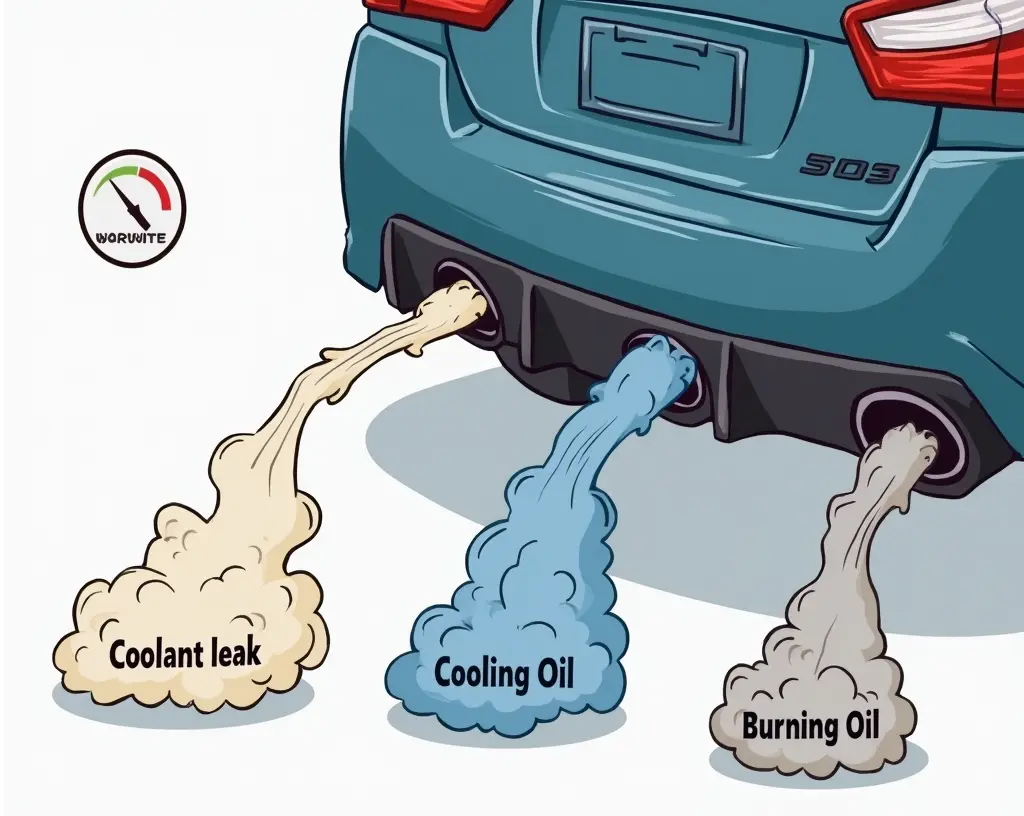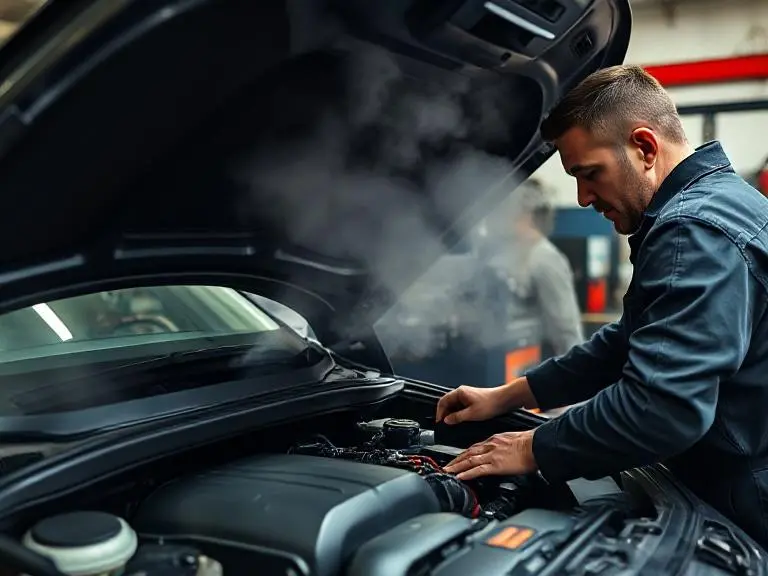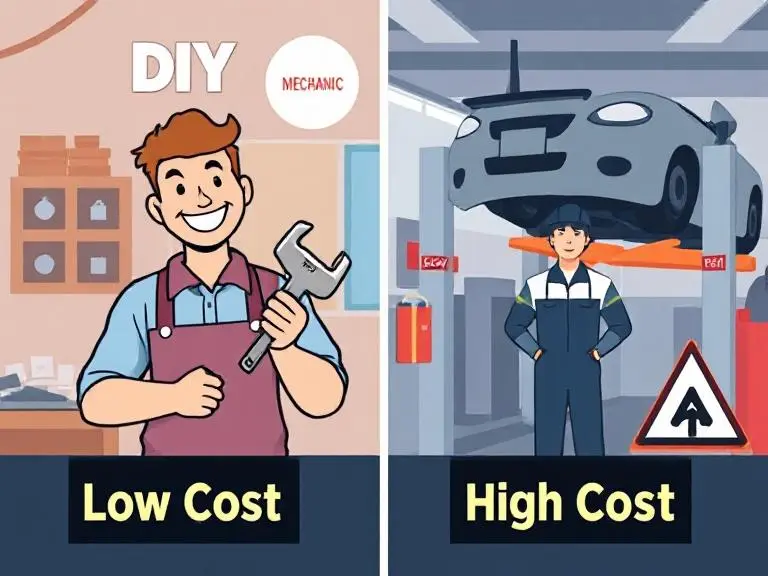My Car Was Smoking—But the Engine Wasn’t Overheating. Here’s What Happened…”
I’ll never forget the morning I started my car and saw thick smoke curling from the hood. My heart raced—was my engine about to blow? But when I checked the dashboard, the temperature gauge was perfectly normal. No warning lights. No strange noises. Just smoke.
Confused, I called my mechanic. His first question? “What color was the smoke?”
Turns out, smoke without overheating is your car’s silent scream for help—and the color tells you exactly what’s wrong:
🔥 White smoke? Coolant is burning (possibly a blown head gasket—a $2,000+ repair if ignored).
💙 Blue smoke? Engine oil is leaking into combustion (worn piston rings or valve seals).
🌫️ Gray smoke? Could be excess fuel or even transmission fluid where it shouldn’t be.
I learned the hard way: Waiting could turn a $50 fix into a totaled engine. But luckily, some solutions are cheap and easy—like replacing a $10 PCV valve or fixing a leaky hose.
In this guide, I’ll walk you through:
✔️ How to diagnose your smoke (with simple tests anyone can do).
✔️ The #1 cheapest fix to try first (it takes 5 minutes!).
✔️ When you MUST stop driving—or risk engine seizure.
If your car is smoking but not overheating, don’t make my mistake. Let’s find the problem—before it finds your wallet.
Table of Contents

Decoding the Smoke – What Color Tells You
1. White Smoke – Coolant Is Burning
🔹 Possible Causes:
- Blown head gasket (most common)
- Cracked engine block or cylinder head (serious!)
- Faulty intake manifold gasket (common in older cars)
🔹 Expert Tip: “White smoke with a sweet smell? That’s coolant burning. Check for milky oil (mayonnaise-like substance under the oil cap).” – ASE Certified Mechanic
🚨 Urgency: High – Driving with coolant loss can warp the engine.
2. Blue Smoke – Engine Oil Is Burning
🔹 Possible Causes:
- Worn piston rings (oil seeping into the combustion chamber)
- Faulty valve seals (smoke at startup)
- Bad PCV valve (causing oil suction into the intake)
🔹 Pro Mechanic Trick: “If smoke appears at startup, it’s likely valve seals. If it smokes under acceleration, suspect piston rings.”
🚨 Urgency: Moderate-High – Can ruin the catalytic converter over time.
3. Gray Smoke – Fuel or Transmission Fluid Issue
🔹 Possible Causes:
- Rich fuel mixture (clogged air filter, bad O2 sensor)
- Leaking fuel injector (dumping excess fuel)
- Turbocharger oil leak (if equipped)
🔹 Quick Check: “Smell the exhaust. Gasoline odor? Likely fuel issue. Burnt oil smell? Think turbo or transmission fluid leak.”
🛠️5 Expert-Approved Fixes (From Cheapest to Most Expensive)
1. Check the PCV Valve – The $10 Fix
🔹 Why It Works: A stuck PCV valve forces oil into the intake, causing smoke.
🔹 DIY Test:
- Locate the PCV valve.
- Shake it – if it doesn’t rattle, it’s clogged.
- Replace it (takes 5 minutes).
2. Coolant System Pressure Test (For White Smoke)
🔹 Why It’s Needed: Finds hidden leaks in hoses, radiator, or head gasket.
🔹 How to Do It:
- Rent a coolant pressure tester from AutoZone (free loan).
- Pump to 15 PSI and watch for pressure drop.

🚨 If Pressure Drops Fast: Likely a head gasket or cracked block.
3. Compression Test (For Blue Smoke)
🔹 What It Reveals:
- Low compression in one cylinder? = Bad piston rings.
- Low compression in adjacent cylinders? = Blown head gasket.
🔹 Cost: 50−50−150 at a shop (or DIY with a $30 tester).
4. Turbocharger Inspection (If Equipped)
🔹 Signs of Failure:
- Oil in the intercooler pipes
- Whining noise under acceleration
- Excessive smoke under boost
🔹 Fix: Rebuild or replace turbo (500−500−2,000).
5. Head Gasket Replacement (Last Resort)
🔹 Symptoms Needing This Fix:
- White smoke + overheating (sometimes not immediately)
- Bubbles in coolant the reservoir
- Engine misfires
🔹 Cost: 1,500−1,500−3,000 (varies by car).
When to Call a Mechanic vs. DIY
| Symptom | DIY Fix? | Mechanic Needed? |
|---|---|---|
| White smoke, sweet smell | ❌ No | ✅ Yes (Head gasket likely) |
| Blue smoke at startup | ✅ Yes (PCV/Valve seals) | ❌ No (unless severe) |
| Gray smoke, fuel smell | ✅ Yes (Check injectors) | ❌ No |

FAQ
Q1: My car is blowing white smoke, but the temperature gauge looks fine. Can I still drive it?
A: Absolutely not! White smoke means coolant is burning—likely from a leaking head gasket or cracked engine block. Even if it’s not overheating yet, coolant loss can lead to catastrophic engine seizure. Play it safe: Tow it to a mechanic immediately.
Q2: Why does my car only smoke when it’s cold outside?
A: Cold weather exposes weak spots! Shrinking valve seals let oil slip into the combustion chamber, while condensation mixes with exhaust fumes, making smoke more noticeable. Once the engine warms up, the smoke may fade—but the underlying issue won’t.
Q3: I’ve heard about ‘head gasket sealers.’ Are they worth trying?
A: They’re a last-resort Band-Aid, not a real fix. These chemicals might slow a minor leak temporarily, but they can also clog coolant passages. For a permanent solution, proper head gasket replacement is the only reliable fix.
Q4: How much am I looking at to stop my engine from smoking?
A: Costs vary wildly:
Up to $3,000: Head gasket replacement + engine machining.
The sooner you diagnose it, the cheaper the repair!
$10 fix: Replacing a clogged PCV valve (5-minute DIY job).
$500–$2,000: Turbocharger repair or piston ring replacement.
📌 Final Summary –Your Car is smoking but not overheating. Act Now Before It’s Too Late!
- Identify the smoke color (white, blue, gray).
- Try cheap fixes first (PCV valve, coolant check).
- Run a compression test if blue smoke persists.
- Avoid driving if white smoke is present.
🔧 Need Help? Comment your car’s make, model, and symptoms—I’ll give tailored advice! 👇
You need to read these articles:
